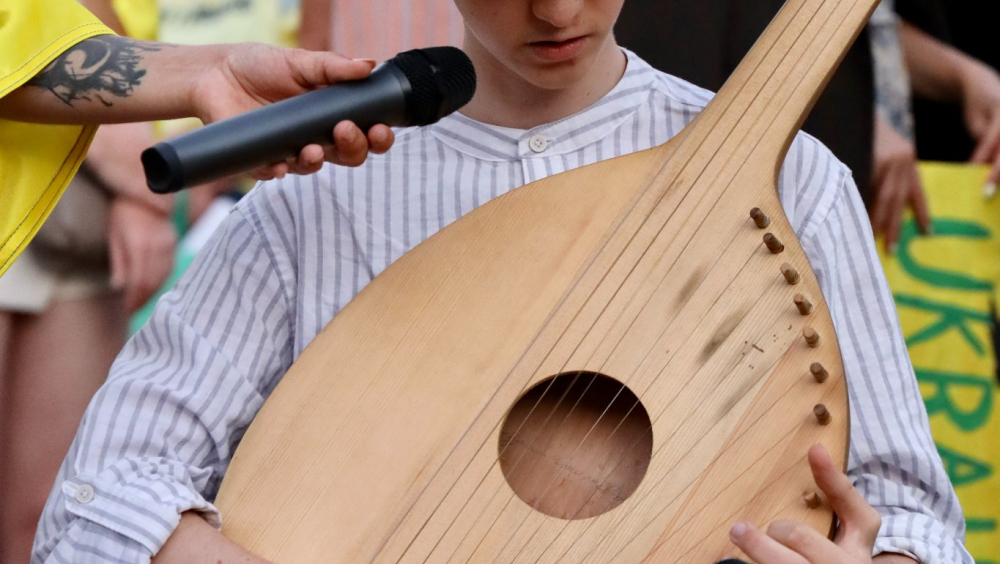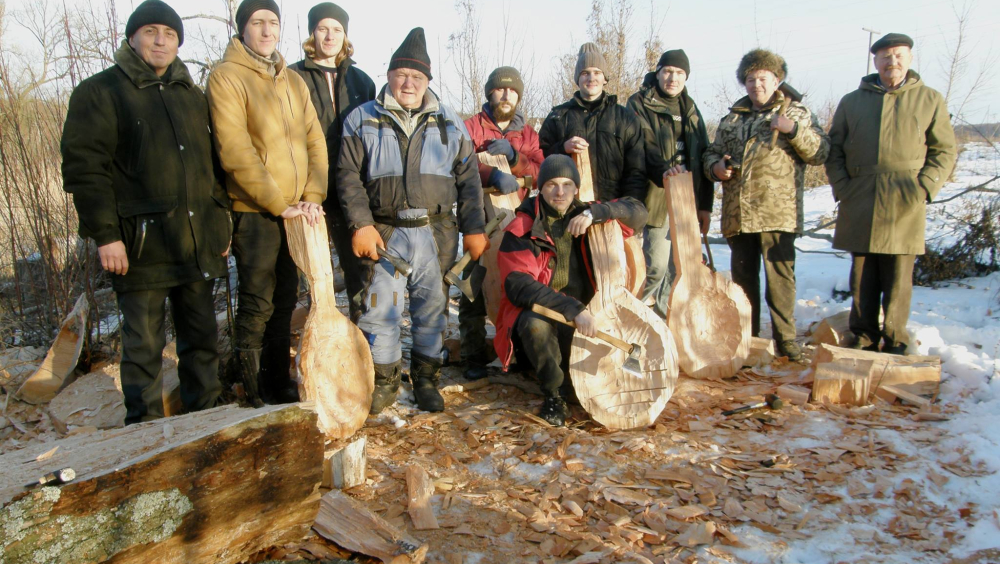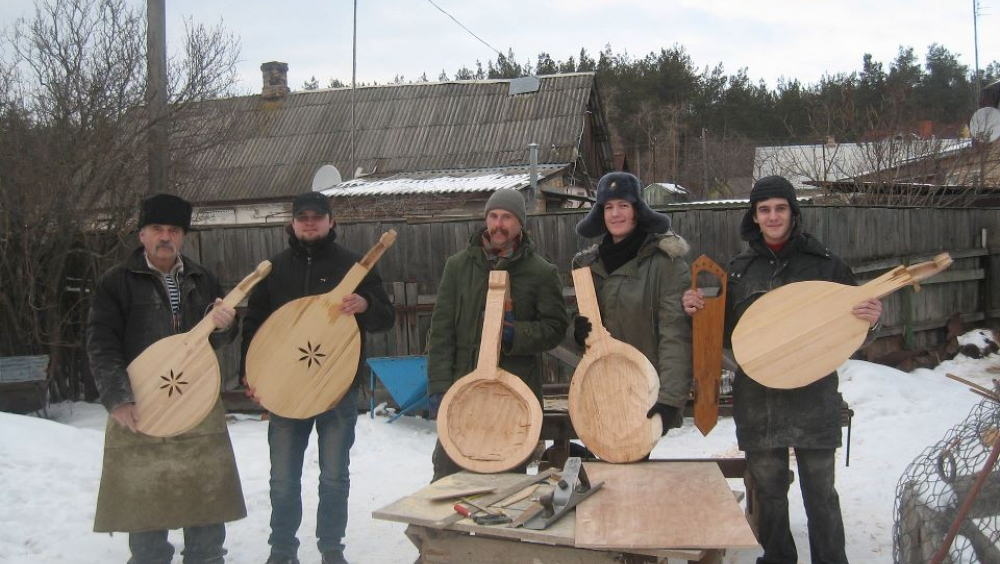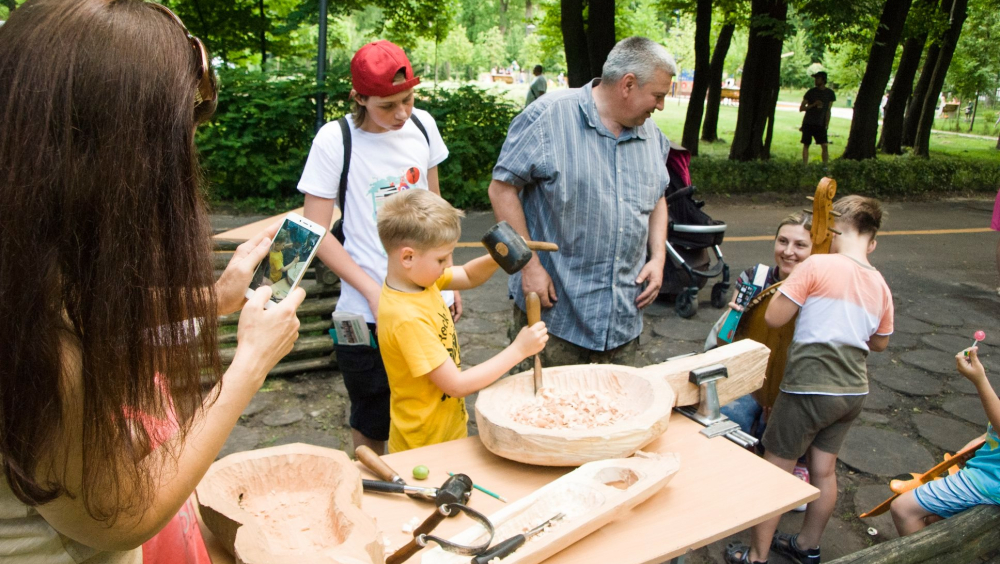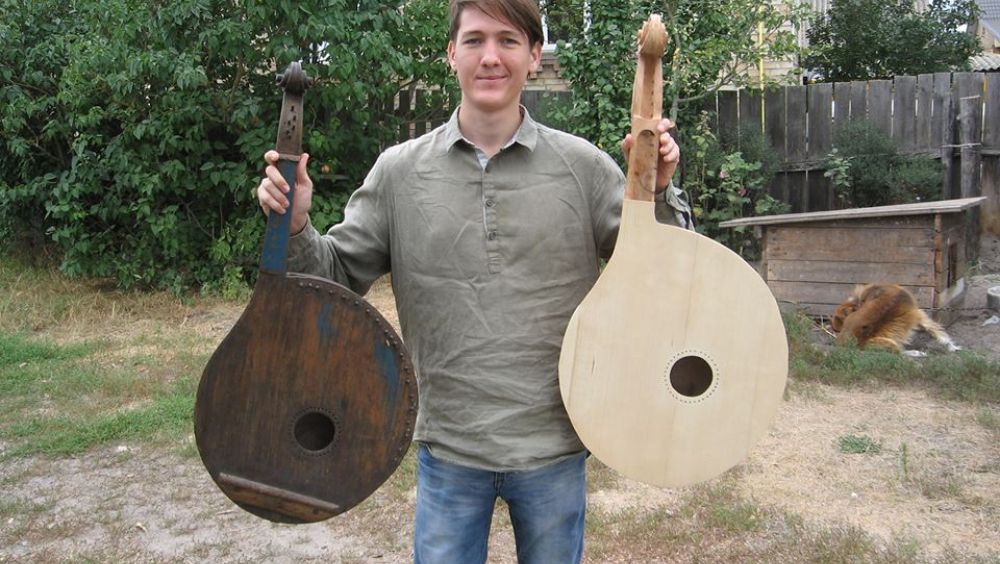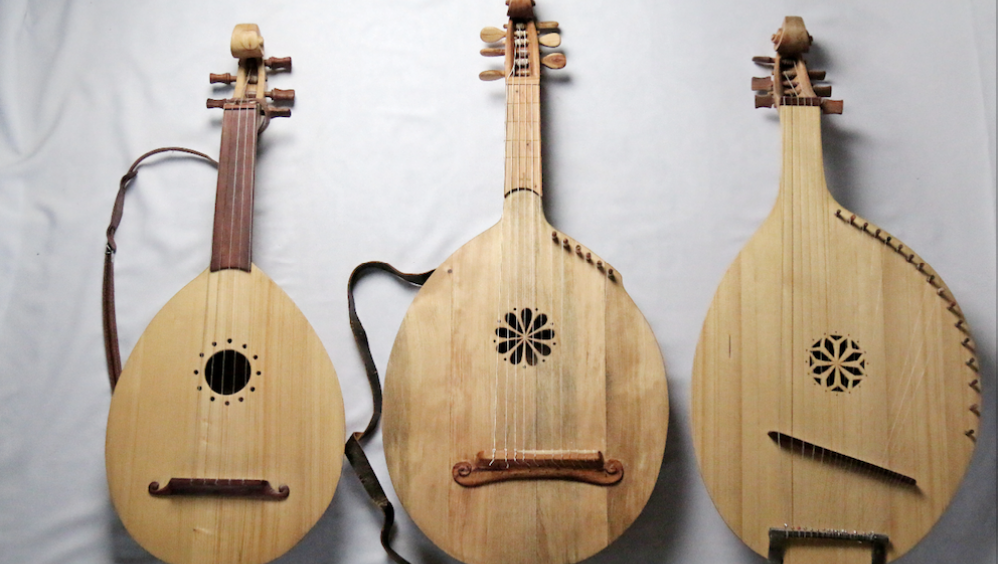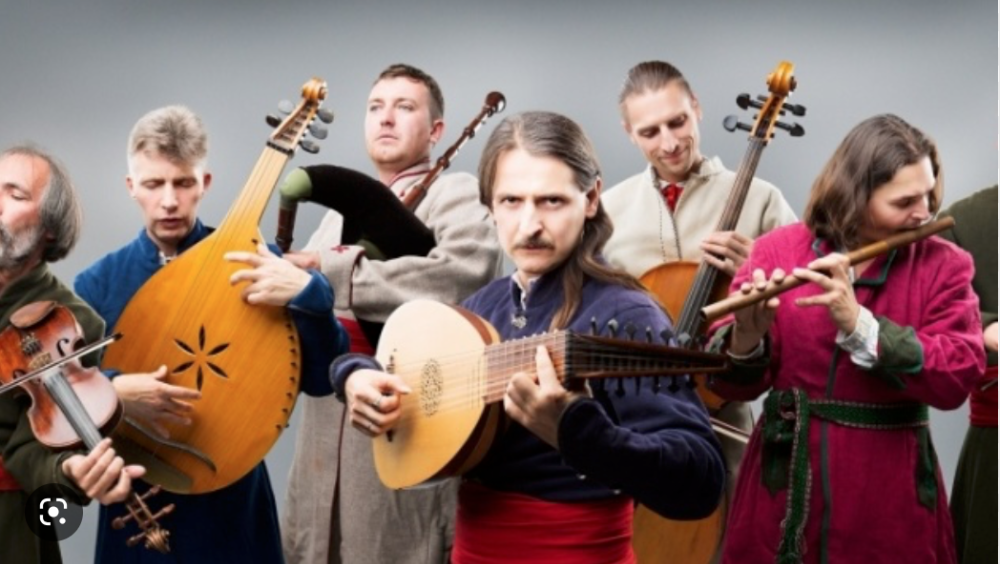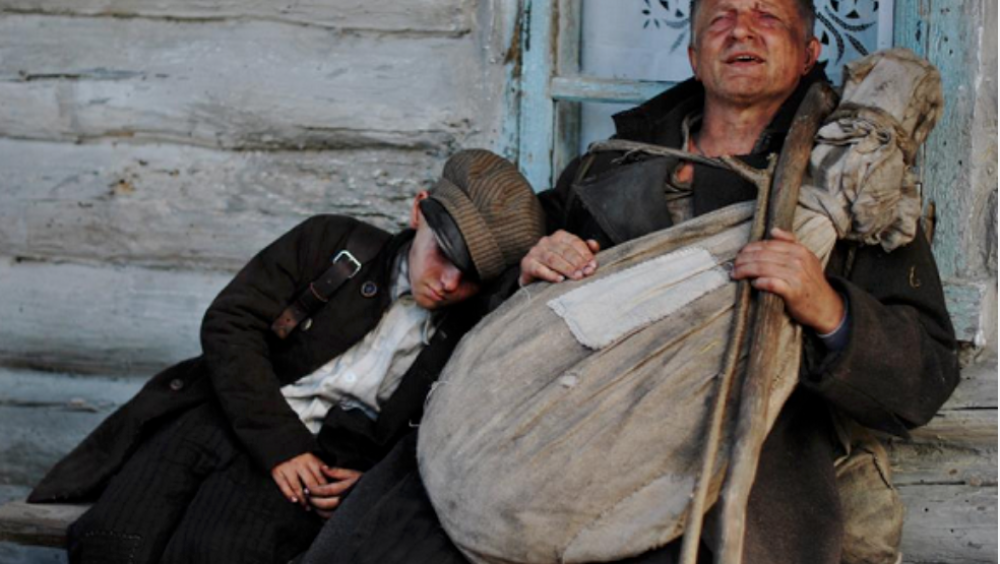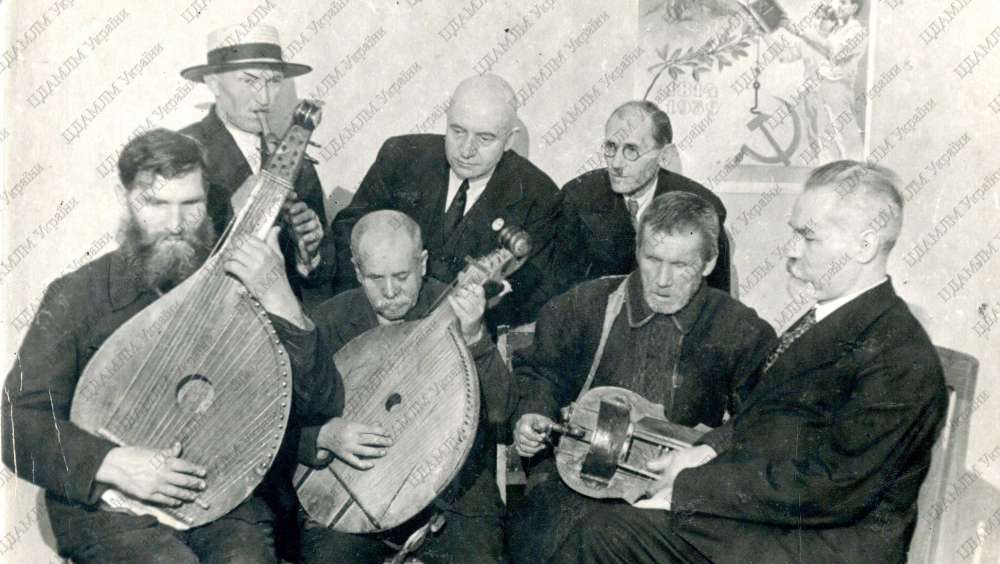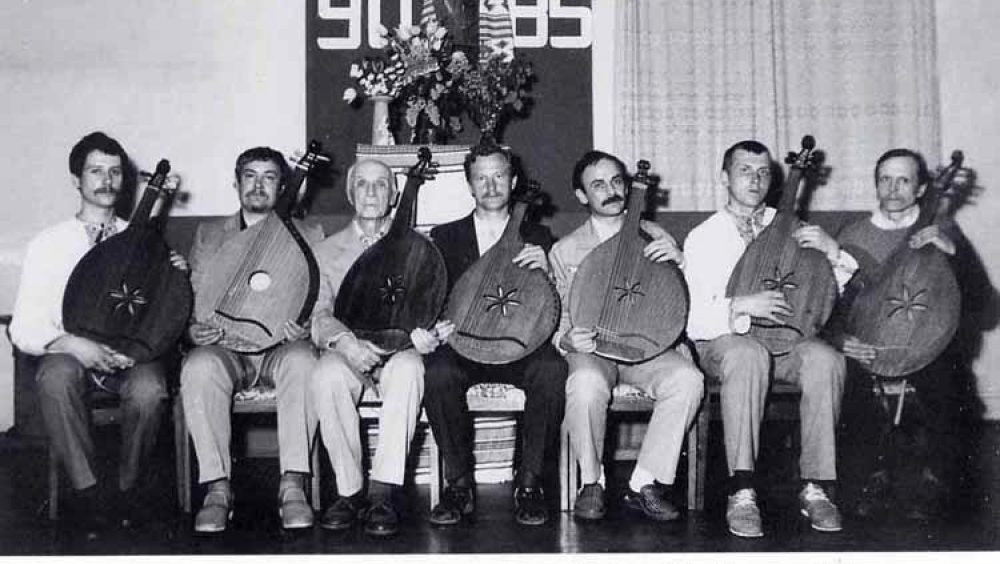Kobzars: «the Order» of Blind Musicians
The Kyiv Kobzar Guild is an artistic music community uniting musicians, reconstructors of ancient instruments, and researchers of the musical kobzar tradition of the folk epic.
There can be no doubt that Ukrainian kobzarism is a world-class cultural phenomenon. This refers not only to antiquity, hermeticism, and archaism. It is surprisingly conservative inside, yet very light and flexible in form, being easily reinterpreted on an artistic level by each generation.
Why exactly the blind were kobzars? To understand this, we need to imagine all the conditions of life in the pre-industrial era. The absence of eyesight severely limits the professional suitability of any person, especially in ancient times. Blind musicians living practically on alms and donations have been common within many world cultures, so there is nothing surprising here. Another matter is how the kobzars positioned themselves among beggars and what standing they had in society. It is safe to say the blind kobzars of the 18th-19th centuries can be called the marginal intellectual class of their time, and today kobzars are a respected Ukrainian elite. Blind kobzars carried the truth about the Cossack times of the 17th-18th centuries in their biological memory and passed it on to the intellectuals of the 19th-20th centuries, which largely gave rise to the Ukrainian national idea.
Kobzarism is an ancient European tradition. The Europeans called the kobza the "Cossack lute", while playing the hurdy-gurdy (the Ukrainian version of which was called the lira) was a pan-European feature. The most complex stringed plucked folk instrument, which always goes along with kobzars, is the torban, which is, in turn, the Ukrainian improved version of the baroque theorbo.
The Kyiv Kobzar Guild is a kind of socio-cultural process that embraces the research, scientific, reconstructive, artistic and educational activities of a large community of people in Ukraine and beyond. The core of the process is a cultural phenomenon, the Ukrainian kobzarism in all aspects of its existence. As a separate unit, the Kyiv Kobzar Guild commenced its existence as a group of followers and students of Heorhii Kyrylovych Tkachenko at the end of the 1970s. Soon enough, the Kharkiv Kobzar Guild was formed, and there is a lot of talk about the potential of the Lviv Lirnyk Guild.
Groups of interested persons and enthusiasts can be found in many corners of Ukraine and the world. For the general public, it will not be a mistake to use the general name of Kobzar Guild. Affiliation of a certain person with the guild can be determined by different characteristics, since the main goal in this research process is to understand the cultural "text" and "context" of the seclusive order of blind musicians, bearers of folk epics, common archaism and national identity. Speaking about the Kobzar Guild, things worthy of note are a certain hierarchy of the society and a high level of verification of folklore material. In simple words, we have a living tradition of folklore transmission from bearer to bearer, regardless of external social and political circumstances. The broad circle of the Kobzar Guild consists of people who single-handedly make a relevant musical instrument for their own needs. A separate category is represented by musicians and performers. The third one includes researchers and scientists. The phenomenon of the Kobzar Guild exists at the intersection of these three areas of activity.
Kobzars are performers of dumas - lyric-epic songs describing events of the beginning of the 16th century. These are not chronicles, and no longer medieval epics, but more artistic heroic compositions about historical characters or events. It is actually from the lifestyle of the Zaporizhia Cossacks (Ukrainian military State of 17th century) that most researchers derive the history of kobzarism. Of course, there were also layers of other European and Ukrainian traditions of epic, secular and religious musical performance. Blind kobzars carried the truth about the Cossack epoch in their biological memory and passed it on to the Ukrainian intellectuals of the 19th-20th centuries, which largely gave rise to the Ukrainian national idea. At the time of the formation of the Ukrainian State after the collapse of the Russian Empire a hundred years ago, kobzarism became practically a brand of Ukrainian culture, and has continued to exist to this day in the two fundamentally different, but at the same time valuable levels, traditional and stage-academic.
However, the communist Russian occupation authorities contended with all possible methods against Ukrainians playing their national instruments. Special attention should be paid to the screened legend "The Guide" about the mass execution of folk singers that took place in 1920-1940 – the years of great terror. On the other hand, during the 20th century the communist leadership did a great deal to adapt the bandura, the kobzar musical instrument, to the academic environment, the education system, to modify the instrument and make it known in this form to the whole world. For many decades, the folk tradition existed deeply "underground", and only in 2023 it was included in the Ukrainian national list of UNESCO as an object of intangible cultural heritage.
Until the beginning of the 20th century, the environment of the kobzars was an extremely complex social organization that had its own charter, court, education system and an internal parlance that could only be understood by the blind. The strictest degree of responsibility was expected, as in case of a serious fault the guilty kobzar could be subjected to "cutting off the bag" (that is, prohibition to earn money with this craft) with breaking of his instrument. Such a powerful internal organization prompts us to regard kobzar guilds in the 18th-20th centuries as a unique socio-cultural phenomenon that requires careful, comprehensive and long-term research. The kobzar guild in the modern sense emerged based on the physical experience of communication between musicians, researchers and artists of the beginning and middle of the 20th century and the last representatives of the old-world kobzar tradition before its destruction in the 1930s. Today, many aspects of the kobzar community functioning are subject to reconsideration and critical review, and a number of pressing sociological and historical issues are being raised in parallel. Each kobzar guild has its own hierarchical structure. The "panotec" (father) is a leader who is a universally recognized authority, and "bratchyki" (brethren) are guild members and students.
An important applied aspect of the modern existence of kobzarism as a cultural phenomenon is the making of traditional musical instruments. Most often, these are old-world banduras of various types with an average of 18-25 strings, and kobzas of the Veresai type kobza with 6 strings on the fingerboard and 6 strings off the fingerboard. In the same environment of reconstructors, instruments of other groups and functional specifics are also usually reproduced. These are searches for the archaic kobza based on iconographic materials, instruments of traditional folk trios (folk violins, tambourines, bassettos, cymbals), instruments of the Old Ukrainian era etc. The dominant technology is the making of an instrument from a solid piece of wood. The process of making instruments has great pedagogical potential: from the experience of recent decades, the environment of kobzar guilds creates a rather unique educational and awareness-raising atmosphere in the society. Instrument-making is constantly attracting a large number of interested young people as a long-term project, which is: search, selection and preservation of eco-friendly natural materials (no trees are cut down for these needs); mastering the techniques of carving, hewing, planing, jointing, carving, polishing and preserving wood, not to mention the opportunity to get a functional musical instrument and a vast musical layer of 19th century music available for learning.
Kobzarism is a profoundly European tradition. Yet it has unique touches of orientalism, without which it is impossible to imagine Ukraine that has always been at the crossroads of Eastern and Western civilizations. The Europeans called the kobza the "Cossack lute", and playing the lira, which was also spread by the kobzars, was generally a pan-European feature and did not spread beyond the Cossack villages in the Kuban. Performance of lirnyks throughout Europe was closely connected with the church, including in Ukraine. Their repertoire consisted mainly of religious songs. At the same time, the kobzar tradition was in close contact with secular music, which was presented most often in the Polish and Ukrainian interpretation of the European instrumental tradition. Violins, guitars, lutes, zithers and other musical instruments that also appeared in Ukraine from the 17th-18th centuries are another proof of this. The most complex stringed plucked folk instrument, which always goes along with kobzars, is the torban, which is, in turn, the Ukrainian improved version of the baroque theorbo. The very structure of the modern kobzar guild owes a lot to the European historic reconstruction clubs. In the very melody, performance manner and lyrics, kobzarism leans mostly towards the former Byzantium, which was conquered by the Ottomans.
Story by Lesia Voroniuk, Andrii Paslavskyi
